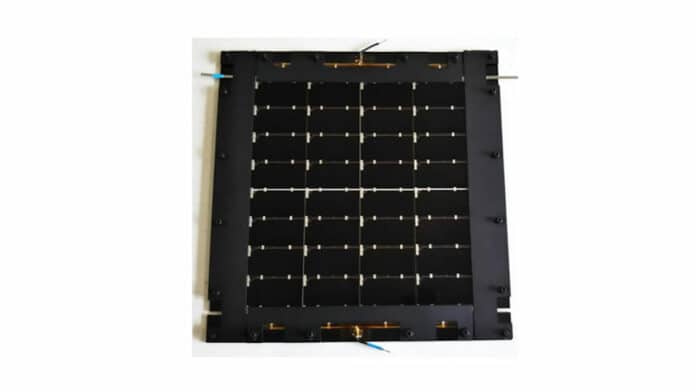The transportation sector, which relies on fossil fuels for most of its energy needs, is shifting to electric vehicles as part of its efforts to reduce CO2 emissions and combat air pollution. As a result, it is anticipated that the supply of electricity will be increasingly derived from renewable energy with the aim of maximizing these effects.
Moreover, installing solar cells on mobile equipment such as electric vehicles will enable direct electricity supply from renewable energy sources, which could improve user convenience by cutting fuel expenses and charging frequency.
Based on this background, a Japanese electronics company, Sharp Corporation, is developing technology for solar cell modules that can be mounted on mobile equipment that features high efficiency and low cost. The solar cell module combines a tandem double-junction solar cell and a silicon solar cell. The company says its technology can be widely installed on regular electric vehicles and mobile units as well as for use in the space and aviation fields.
Under this project, Sharp now announced that it achieved the world’s highest conversion efficiency of 33.66% in a stacked solar cell module. The conversion efficiency of this module breaks the world record of 32.65%.
The prototype solar cell module has achieved high efficiency by efficiently converting light of various wavelengths into energy. The new structure has compound two-junction solar cells on the top layer and silicon solar cells on the bottom layer. The tandem double-junction cell in the top layer has been designed to achieve high efficiency even in a thin layer and improve light transmittance to the bottom layer.
Additionally, the thickness of the tandem double-junction cells can be reduced to less than one-third that of conventional triple-junction cells, which will help to reduce material costs.
Sharp will continue to pursue research and development to enhance the efficiency and lower the cost of solar photovoltaic modules, aiming to install them in electric vehicles and mobile equipment as well as in the aerospace and aviation fields. By doing so, Sharp aims to contribute to reducing greenhouse gas emissions in the mobile field and achieve carbon neutrality by 2050.
In April 2013, the company achieved a conversion efficiency of 37.9% for a small-sized (area: 1.047 cm2) compound three-junction solar cell. In 2022, they introduced a thin-film structure that made the cell more flexible and lightweight and achieved an efficiency of 32.65% for a large module (965 cm2).
This time, by changing the structure to a stacked solar cell module that combines a tandem double-junction solar cell module and a silicon solar cell module, Sharp was able to improve the conversion efficiency to 33.66% in a practical-size module (775 cm2 area).
